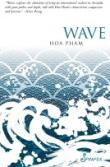
Latest Issues
AbstractHistoryArchive Description
'We were we until you made us me and you… .
'Midori and Âu Cô are international university students in Melbourne. They play at being silver dragons birthing pearls from their mouths. They are united by loneliness. Midori’s parents are killed by the tsunami in Fukushima and soon after Midori and Âu Cô witness a university shooting. Midori ends up in a psychiatric hospital, not able to cope with the double blow.
'Âu Cô is courted by a Vietnamese-Australian boy (Dzung) who has also survived the shooting. Dzung is unaware of Midori and Âu Cô’s relationship and pressured by his parents asks Âu Cô to marry him. Midori is silenced and unable to out herself and Âu Cô she understands too well the pressures of family. Âu Cô accepts since her own family wants to migrate to Australia. Midori absconds before the wedding to the Blue Mountains. She suicides close to the Three Sisters. Âu Cô is left to work through her guilt. She falls pregnant to Dzung and after she gives birth she looks closely at his skin. The little baby has silver dragon scales running down his neck.' (Publication summary)
Notes
-
Dedication: For Alister, William and Max with love.
Publication Details of Only Known VersionEarliest 2 Known Versions of
Works about this Work
-
Dragon Lovers and Plant Politics : Queering the Nonhuman in Hoa Pham’s Wave and Ellen Van Neerven’s “Water”
2021
single work
criticism
— Appears in: ISLE : Interdisciplinary Studies in Literature and Environment , Autumn vol. 28 no. 3 2021; (p. 1048–1065)'In her 2015 novel Wave, the Vietnamese Australian writer Hoa Pham creates a world in which fantasy is constitutive of reality. Enshrouded in lyricism and a faint veil of racial melancholia, the novel portrays how a lesbian Asian couple, Midori and Âu Cô, coping on the margins of contemporary Australian society find belonging in an imagined nonhuman identity, as dragons-in-love. Both characters are migrants who embody different subversions of inculcated dragon stories. Midori’s early sexual experiences in Japan involve enacting secret dragon performances with her girlfriend. Âu Cô’s sexual orientation defies the expectations of her Vietnamese name, which means a mythic mountain fairy married to the dragon king. The strategic trope of queering the dragon in the story comes to highlight the couple’s desire to reclaim a functional self in the face of new racial and sexual stereotypes in Australia. In a more radical manner, the Indigenous Australian writer Ellen Van Neerven’s 2014 speculative eco-novella “Water” queers the nonhuman in ways that challenge cultural essentialism and human exceptionalism. At the heart of the novella’s futuristic vision is a newly-discovered species, the plantpeople, who are sentient beings capable of reading, speaking, and, most importantly, adapting to a changing environment. As the novella connects the plantpeople to Indigenous Australian inscriptions of land, the homo-erotic love between the Indigenous protagonist and the leader of the plantpeople dismantles heterosexual norms while exposing colonial claims of history and sovereignty that suppress an Indigenous multispecies ontology.' (Introduction)
-
Dragon Lovers and Plant Politics : Queering the Nonhuman in Hoa Pham’s Wave and Ellen Van Neerven’s “Water”
2021
single work
criticism
— Appears in: ISLE : Interdisciplinary Studies in Literature and Environment , Autumn vol. 28 no. 3 2021; (p. 1048–1065)'In her 2015 novel Wave, the Vietnamese Australian writer Hoa Pham creates a world in which fantasy is constitutive of reality. Enshrouded in lyricism and a faint veil of racial melancholia, the novel portrays how a lesbian Asian couple, Midori and Âu Cô, coping on the margins of contemporary Australian society find belonging in an imagined nonhuman identity, as dragons-in-love. Both characters are migrants who embody different subversions of inculcated dragon stories. Midori’s early sexual experiences in Japan involve enacting secret dragon performances with her girlfriend. Âu Cô’s sexual orientation defies the expectations of her Vietnamese name, which means a mythic mountain fairy married to the dragon king. The strategic trope of queering the dragon in the story comes to highlight the couple’s desire to reclaim a functional self in the face of new racial and sexual stereotypes in Australia. In a more radical manner, the Indigenous Australian writer Ellen Van Neerven’s 2014 speculative eco-novella “Water” queers the nonhuman in ways that challenge cultural essentialism and human exceptionalism. At the heart of the novella’s futuristic vision is a newly-discovered species, the plantpeople, who are sentient beings capable of reading, speaking, and, most importantly, adapting to a changing environment. As the novella connects the plantpeople to Indigenous Australian inscriptions of land, the homo-erotic love between the Indigenous protagonist and the leader of the plantpeople dismantles heterosexual norms while exposing colonial claims of history and sovereignty that suppress an Indigenous multispecies ontology.' (Introduction)



